Lake Lakota is part of the Newton Hills State Park and is about 28 miles from my eastside Sioux Falls home. This is my second narrative regarding this lake, and the reader is advised to check out both posts.
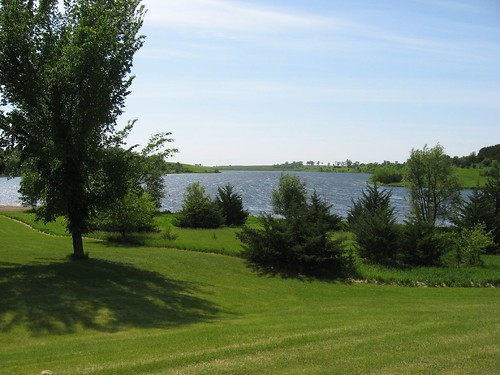
Lakota is about the same size in area as Lake Alvin (about 100 acres) but is shaped a bit differently. The launching point is within a fee area and is very nicely developed for family use. There is a covered picnic shelter, plenty of tables out under trees, a vault toilet, a swimming beach with a changing building, a well designed launching ramp, and a dock.
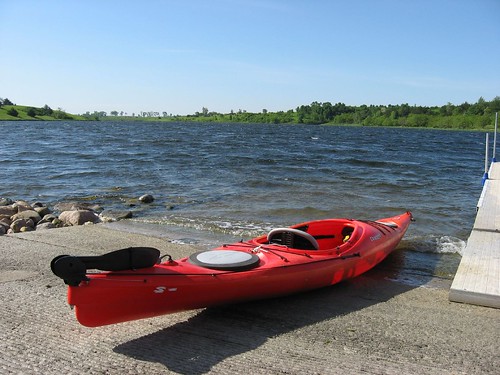
On a weekday morning (Friday, May 25), the area was nearly deserted. The wind was pretty brisk creating white caps in unsheltered parts of the lake, the temperature was about 60 degrees, and it was partly cloudy with plenty of sun. I thought that my 90 minute cruise was especially tranquil and contemplative. The only sounds were the wind blowing through the trees, waves rolling in on the shore, and lots of bird calls. I was able to paddle along lost in my thoughts and able to enjoy the beauty of this wonderful setting.
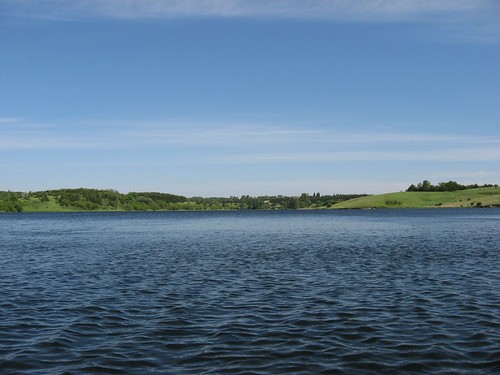
The lake is a creation of the impoundment of Pattee Creek. The creek enters the lake on the extreme northwest side through a culvert. This part of the lake is a narrow arm that leads out into the main body of water that runs generally north and south. The spillway for the lake is located just in front of the dam located at the southern end, from which Pattee Creek continues. The spillway is a rectangle concrete drain with grates on it which directs excess water down under the dam. You can actually rest a kayak along the spillway and watch the water go down the drain.
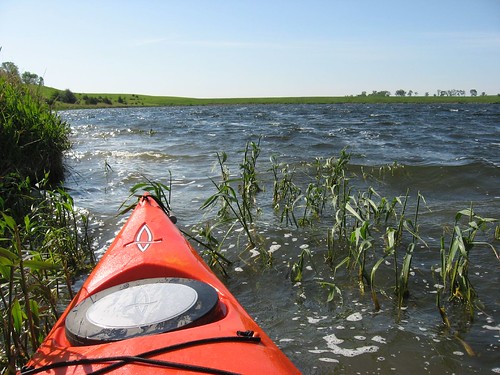
There are trees along most of the lake, some high banks on the southeastern part, several little coves which have quiet waters and lots of aquatic grasses in the lake. The waters are very clear; you can see the bottom clearly at six feet, and this is an especially interesting sight through the water vegetation. There was plenty of water in the lake; even where there was significant aquatic grass, the depth was at least four to five feet along the shore line. My kayak has a rudder, and I really like the way I don’t have to use corrective strokes, especially on windy days. Also, the rudder helps direct the kayak when I want to take photos or gaze quietly at some wild creature. On Lake Lakota, the thick aquatic grasses can cause plenty of practice in raising and lowering the rudder, especially in the shallower coves. Despite all the grasses, my rudder was never tangled.
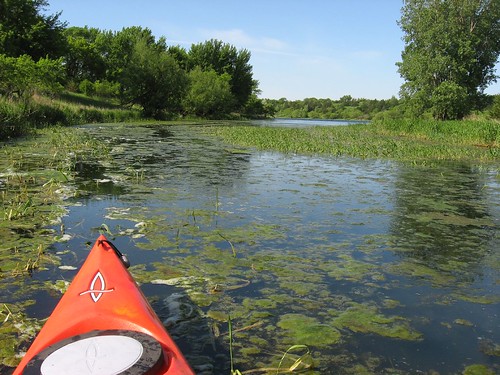
As I was kayaking up the western arm of the lake, I came across the largest turtles that I have ever seen in these lakes. The water in this arm was calm and there was significant aquatic grass growing. I saw giant turtles sleeping with just their head showing. They must have not been spooked by my kayak, because I could see their nostrils showing, but they just hung there in the water. On a couple of occasions, I thought that I had come across rocks in the lake. The water was too deep for that, however, and these were actually very large turtles. I reached over and tapped one of them on the shell, but it did not cause any reaction. The shell on the largest of them must have been at least 18 inches wide and even longer in body.
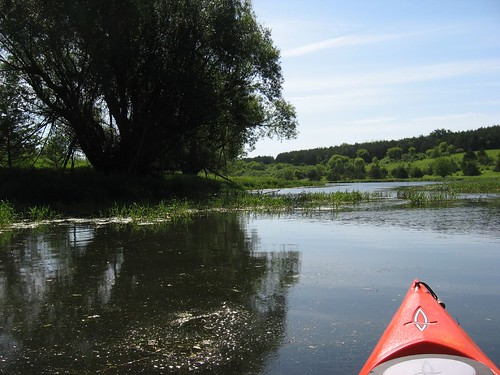
There were very few waterfowl to be seen today and no mammals that I saw. I would think that this would be a good place to see animals because of the park land surrounding the lake and extending inland. But, I didn’t see any on this trip.
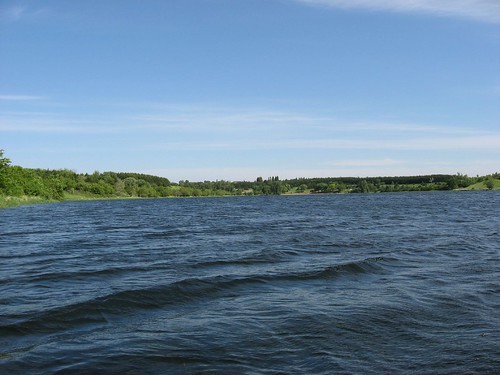
Kayaking the circumference of the lake and peeking into nearly all of the coves and the western arm takes a little over an hour – maybe 75 minutes. I think that this would be a good place to bring a friend or family member who just wants to hang out reading a book or kicking back while you are out in the kayak. The setting is just great for a mini-cruise in a beautiful setting.

No comments:
Post a Comment